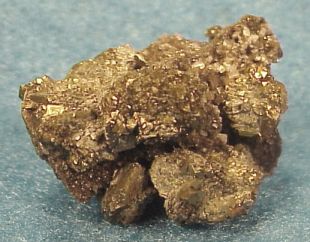The Mineral marcasite

Marcasite is the lesser known companion of the famous mineral Pyrite. Marcasite has the same chemical formula as Pyrite, but crystallizes in a different crystal system, thereby making it a scientifically distinct mineral species. Aggregates of iron sulfide (FeS2) where the crystal structure cannot be determined without complex analysis may be wrongly labeled by dealers and collectors. Some Marcasite specimens are labeled as Pyrite, and some Pyrite specimens as Marcasite. Pyrite used as a gemstone is also improperly termed in the jewelry trade as Marcasite. This is wholly incorrect, as Marcasite is not used as a gemstone.
Marcasite is the most prevalent mineral to experience a condition known as pyrite decay, in which a specimen will slowly disintegrate into a white powder. Little is known about this detrimental condition. It only effects certain specimens at random, while other specimens remain unaffected. However, certain localities are more prone to this condition than others. When a specimen goes through pyrite decay, the sulfur atoms free themselves and form an acid powder that attacks other sulfide minerals and mineral labels. It is most important to remove an afflicted specimen from other minerals, to prevent this condition from spreading.
Color
Pale brass-yellow to nearly white. Tarnishes to a dark brass-like brown or with iridescent colors.
Crystal System
Orthorhombic
Properties
Streak
Dark brown to black, with slightly green tinge |
Hardness
6 - 6.5 |
Transparency
Opaque |
Specific Gravity
4.8 - 4.9 |
Luster
Metallic |
Cleavage
2,2 - Prismatic |
Fracture
Conchoidal |
Tenacity
Brittle |
Other ID Marks
Tarnishes to a dark brass-like brown.
|
Noteworthy Localities
There are several good European localities for Marcasite, specifically Vintířov in Bohemia, Czech Republic; Olkusz, Poland; and the Herja Mine, Baia Mare, and Kapnick, Maramures Co., Romania. Marcasite is also one of the many important minerals from Panasqueira, Portugal; and was found in good crystals in the Teutonia Mine in Misburg, Hanover, Germany. Marcasite is also found in the chalk cliffs on the shore of France and England, specifically at Cap Blanc-Nez, Pas-de-Calais, France and at Kent, England (at Dover and Folkestone).
The U.S. has excellent localities for this mineral. The best and most abundant sources are in the midwest, specifically Joplin, Jasper Co., Missouri; the Sweetwater Mine, Ellington, Reynolds Co., Missouri; Picher, Ottawa Co., Oklahoma; and Baxter Springs and Treece, Cherokee Co., Kansas. Other important Marcasite localities include the Rensselaer Quarry, Pleasant Ridge, Jasper Co., Indiana; and Shullsburg, Lafayette Co., Wisconsin. In Canada, good specimens are found at the Lafarge Quarry, Dundas, Wentworth Co., Ontario.
Distingushing Similar Minerals
Chalcopyrite - Lower hardness, more intense yellow.
Cobaltite - Lower hardness, forms in different crystals, and usually whiter.
Pyrite - Forms in different crystallizes in different crystal system, though may be very difficult to distinguish when crystals are indistinct.
Pyrrhotite - Lower hardness, darker color, attracted to magnets.